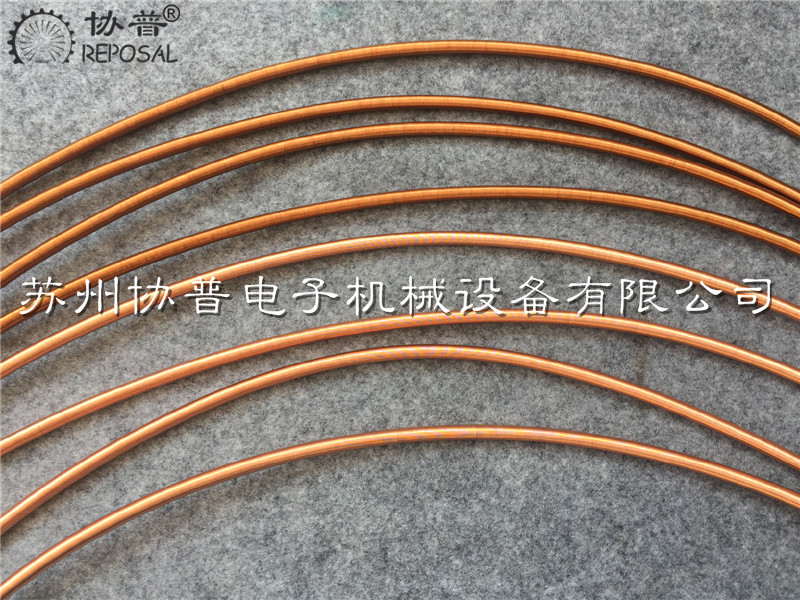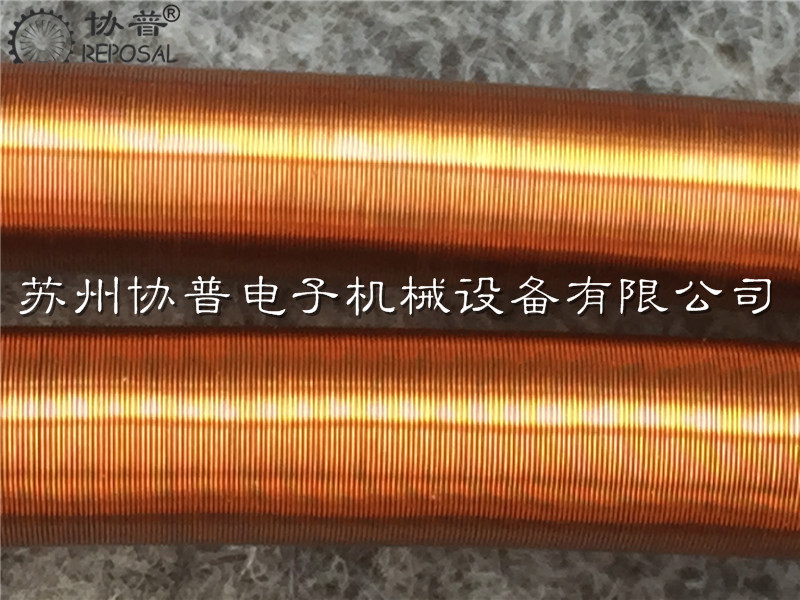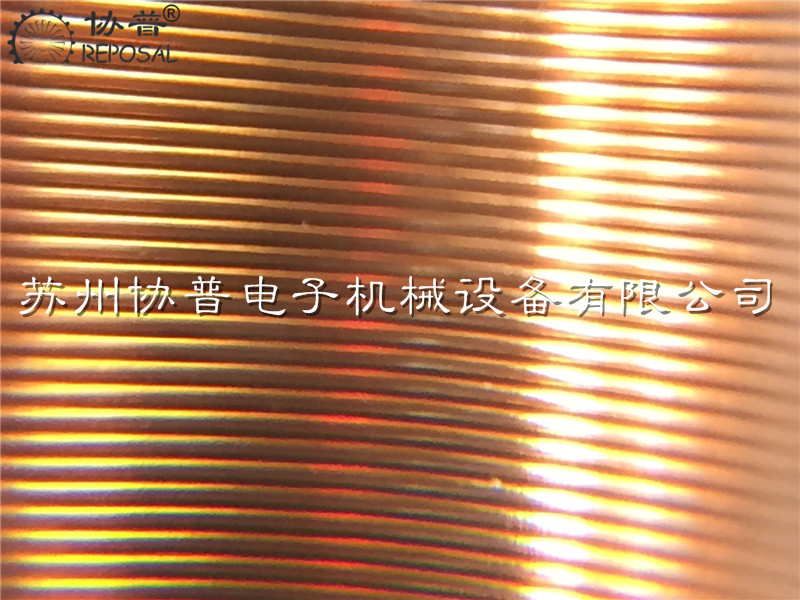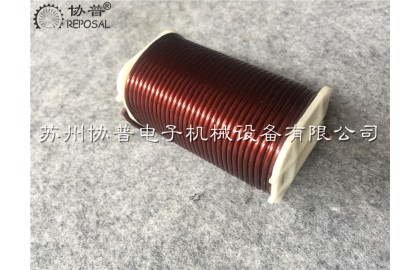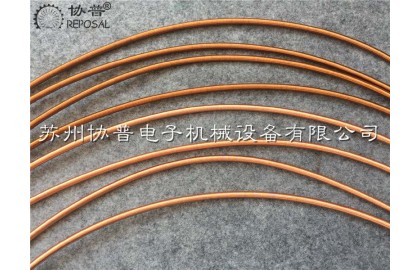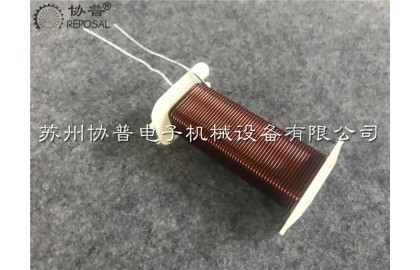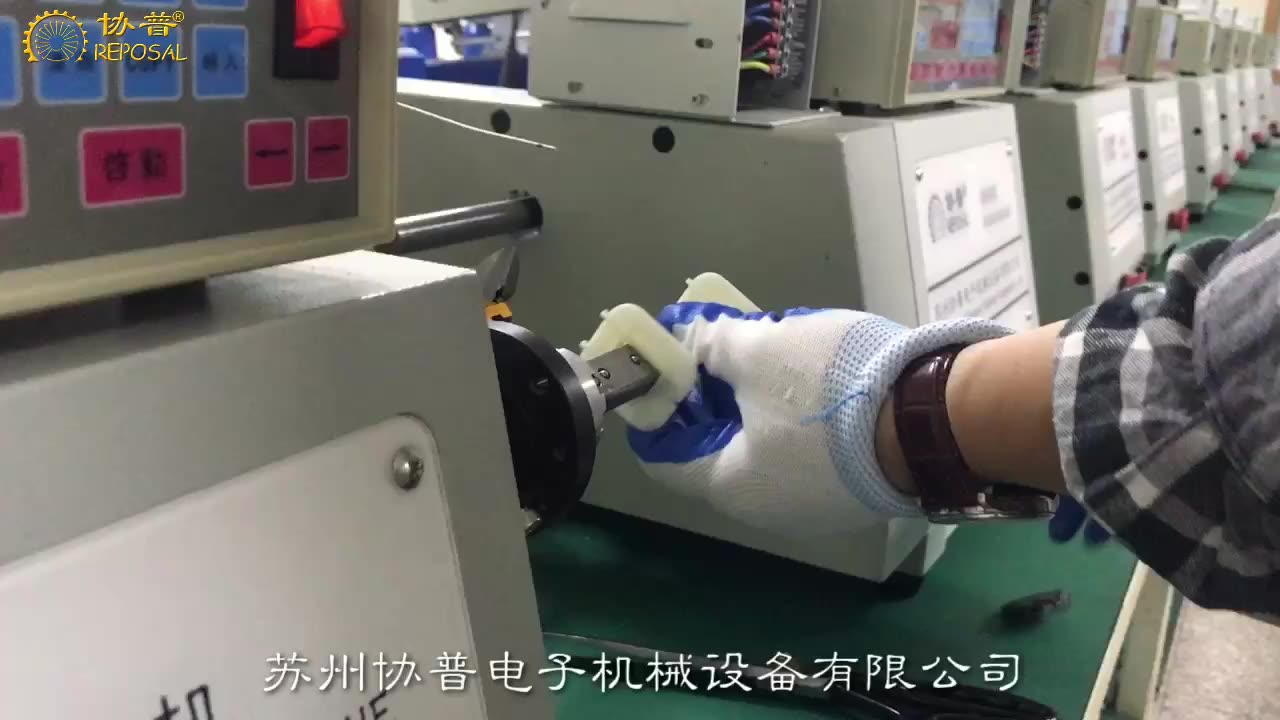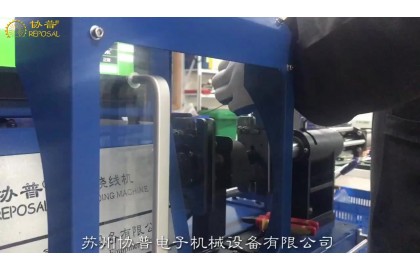Influence of low enameled stress on formability in the process of winding enameled wire by winding machine
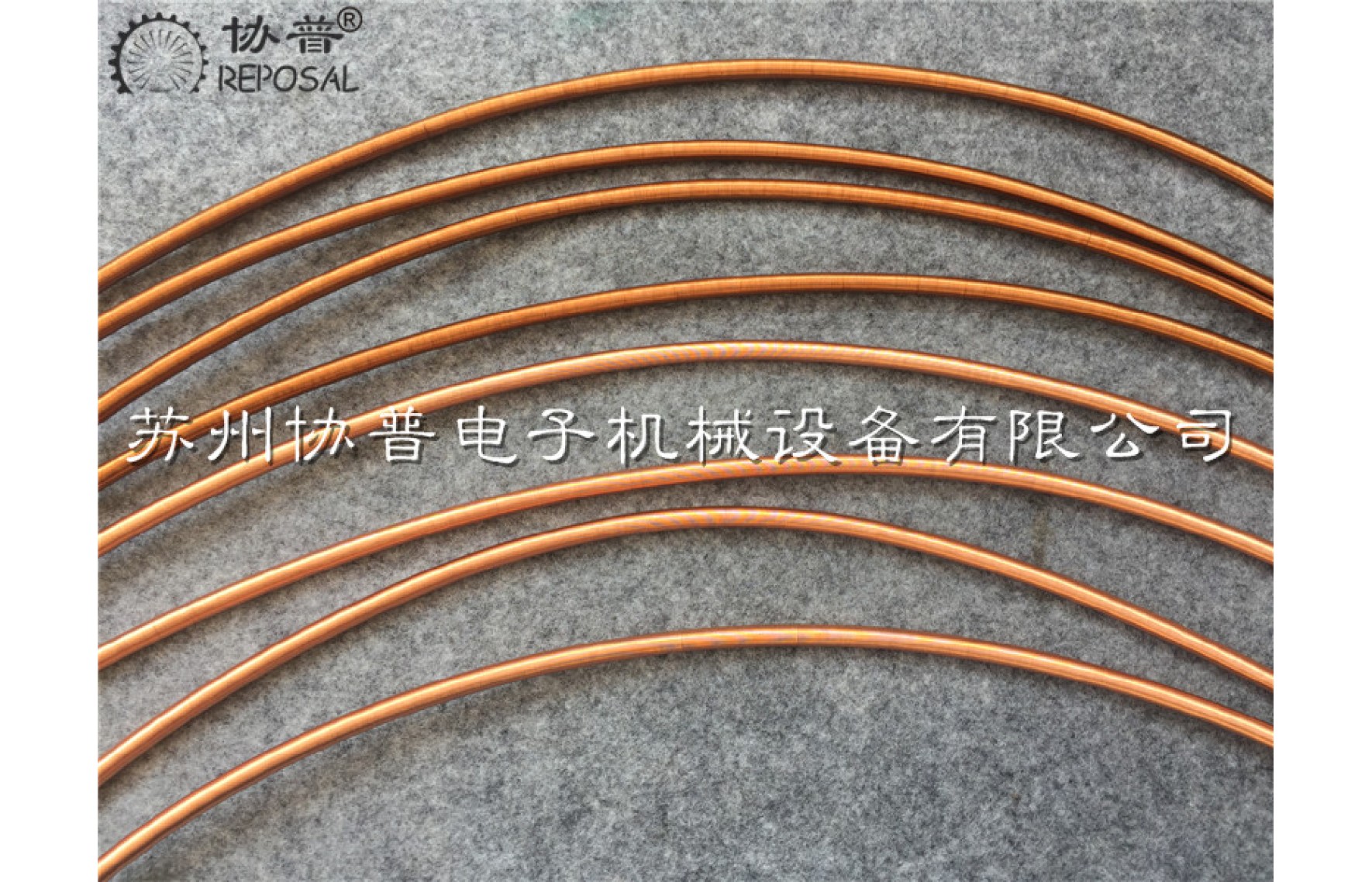
Influence of low enameled stress on formability in the process of winding enameled wire by winding machine
Manufacturers of small motors and coils are faced with the need to increase production capacity and improve product reliability, and they need to continuously reduce the damage to the insulation properties of enameled wire caused by coil winding and assembly. Due to the large stretch during the coil winding and assembly process, the insulating layer of the enameled wire must have good flexibility, and the enameled wire should also have good formability (softness of the wire).
1 The formability of the enameled wire The mechanical properties of the enameled wire are divided into the mechanical properties of the conductor and the paint film. In the process of winding the enameled wire, in the wire embedding process, and in the electrical products using the enameled wire coil as a component, mechanical stress acts on the enameled wire during operation, so the enameled wire may be elongated and the paint film is damaged. etc. phenomenon. Therefore, enameled wire has the requirements of elongation, rebound angle, softness, tensile strength, paint film elasticity, paint film adhesion and scratch resistance.
1.1 Mechanical properties of conductors: softness, elongation, rebound angle, and tensile strength.
Elongation reflects the plastic deformation of the material and is used to assess the ductility of enameled wires. The springback angle and softness reflect the elastic deformation of the material and are used to evaluate the softness of the enameled wire. The tensile strength is related to the recovery recrystallization degree of the conductor and the grain size of the recovered tissue. The tensile strength, softness and elongation reflect the quality of the copper material and the degree of enameled annealing, which have a great impact on the quality of the winding. great relationship.
In the process of enameled wire coating, if the number of paint passes and the number of loops is too large, and the diameter of the guide wheel is not large enough, the wire will be continuously deformed by alternating tension and compression, resulting in the distortion of the lattice. It breaks easily when stretched. When the enameled wire is running, the wire is subjected to excessive tension, which will make the wire thinner. At this time, due to the displacement of atoms or ions on the lattice due to sliding, residual internal stress has been formed, so the wire is brittle and elongated. rate and softness rate decreased.
The annealing degree of the conductor has a great relationship with the tensile strength, elongation and softness of the enameled wire. In a fully annealed wire, the grain size is complete, and there is no or little residual internal stress. During the elongation test, part of the external force is used to move atoms or ions on the lattice and deform the grain. On the other hand, the enameled wire is less likely to be broken, and a larger elongation data can be obtained; on the contrary, the cold-drawn copper wire with a greater degree of deformation, the grain has been deformed into a fibrous structure, and there is residual internal stress inside the metal. In the above, it is in an unbalanced state, and it is easy to break when it is pulled, and its elongation becomes low.
In the fully annealed copper wire, there is no or very little residual internal stress. During the springback (softness) test, the material only relies on the strain potential energy (softness) caused by itself to spring back, so the springback Smaller angle (good softness). On the contrary, there is residual internal stress inside the copper wire without sufficient annealing, and the effect of deformation energy shows a large springback angle (poor softness).
2 Low-stress extensometer predicts the coilability of magnet wire A series of tests for magnet wire are required to ensure the high-quality insulation performance of magnet wire. In order to produce high-quality, flexible magnet wire in the motor industry and obtain qualified test data, high-precision test equipment, careful sample preparation, and advanced test methods are indispensable. Several new test methods and test equipment, although not listed in industry standards, can still be used to help determine the quality of magnet wire. For the motor industry in particular, there are many test instruments that can help predict the spoolability of magnet wire. The Low Stress Extensometer (LSE) measures the softness of magnet wire conductors. The good winding performance of magnet wire is closely related to the softness of its conductor. The softness of the magnet wire determines the formability during coil winding and coil assembly. Low stress tensile (LSE) testing can make a more precise distinction between conductor softness.
3 Low stress tensile test The softness of magnet wire conductors is affected by the annealing process, stretching during manufacturing, conductor diameter, tension system, and other possible factors. The NEMA, IEC and JIS springback angle tests commonly used in the magnet wire industry measure the softness of conductors, but springback angle testing has certain limitations. We often encounter such a situation, experienced technicians or online winders One will feel that this set of wires is stiffer than the other, but their springback angle parameters are similar. In this case, the LSE test can distinguish the softness of the conductor that cannot be measured by the rebound test. LSE testing can also help you determine differences in conductor softness after you change your production process.
In the LSE test (ASTM 1676 standard), each section of the transect is stretched under a specified tensile force. This stretching produces permanent stress-free elongation as a measure of the formability of the magnet wire. The significance of the LSE test is that the permanent deformation tested at these low stresses becomes a measure of the conductor's softness, an indication of the conductor's ability to absorb bending and longitude twisting during winding. The larger the LSE value, the better the formability and windability of the wire. This test is suitable for magnet wire used in the motor winding industry that requires high wire formability and spoolability.
LSE Low Stress Tensile Test Method: The following is a description of the LSE test method:
(1) Remove the sample wire from the finished spool or coil, and take care to minimize bending (Note: Sample wires obtained by incorrect methods often do not get correct test results).
(2) The length of the sample line for the LSE test should be the length of the test range plus the length required by the test handle.
(3) One end of the sample line is clamped with a fixed clamp, and the other end of the sample line is clamped by a movable clamp. The distance between the clips should be 10+/-0.1 inches (254+/-2.5mm).
(4) Add a natural tension to straighten the sample line to be tested, and remove the bending of the wire. Set the tensile measuring device to zero. The initial tensile force applied to the conductor section is: 7500psi (51.7Mpa) for copper conductors and 4000pis for aluminum conductors
(27.6Mpa).
(5) For copper conductors, increase the tension to 15000 pis (103.4Mpa) and hold for 30+/-1 seconds. For aluminum conductors, increase the tension to 8000 pis
(55.2Mpa) and hold for 30+/-1 seconds.
(6) Then restore this force to the initial tension, that is, for copper conductors
7500 pis (51.7Mpa) or 4000 pis (27.6Mpa) for aluminum conductors.
(7) The permanent stretch is measured by the stretch measuring device.
(8) Calculate and record the LSE value as a percentage based on the original standard length of the wire of 10 inches (254mm).
4 Practical application of low stress testing in production
4.1 Low stress comparison of samples with different embedding states Italian SICME company equipment SV-1000 enameling machine to produce automotive motor paint
For the enameled wire, the customer reported that the enameled wire is hard and difficult to embed. It is necessary to find the cause of the hard enameled wire.
In response to customer complaints, analyze the samples with different embedding states reported by customers, mainly for elongation, rebound angle, dynamic friction, static friction, low stress,
tensile strength, etc.
Table 1 Performance comparison of samples with different ruled states
Ruled wire Size Elongation GB Rebound NEMA Rebound Kinetic Friction Static Friction Low Stress Softness Tensile Strength
(N/mm2) %
Difficulty 1.41 41 28 42 0.100 0.046 0.121% 355 256
Easy 1.41 41 28 41 0.102 0.040 0.174% 358 255
(mm)
%
state
It can be seen from the data comparison that the enameled wires with different embedding states have no significant difference in elongation, rebound angle, friction coefficient, softness, and tensile strength. Determines the softness of the enameled wire, the higher the low stress, the softer the wire.
4.2 The influence of enameled wire rewinding on low stress The rewinding process in the production process of enameled wire mainly winds the finished wire in the large-capacity reel into a small-capacity reel to meet the needs of different customers. After rewinding, the finished wire feels hard problem, test low stress on the finished wire before and after rewinding,
A sharp drop was found for low stress.
Based on this, we preliminarily judge that the take-up has a great influence on the low stress, and this judgment needs to be verified.
4.3 Root cause analysis of low stress drop The enameled wire from the enameled oven is sampled at different continuous positions to detect low stress to judge the trend of low stress drop.
It can be seen from Figure 1 that the low stress of the enameled wire from the oven outlet to the coating surface lubricant does not decrease significantly, and the low stress of the enameled wire decreases significantly after passing through the pressing wheel to the finished wire take-up. The diameter of the wire steering guide pulley is larger, while the diameter of the line steering guide pulley is smaller in the interval between the pressing wheel and the finished wire take-up. Under the condition that the diameter of the guide pulley is not large enough, the wire is continuously deformed by alternating tension and compression, resulting in crystallinity. The distortion of the grid reduces the low stress value and is easy to break when stretched. It is necessary to adjust the part of the line steering guide wheel from the pressing wheel to the finished line take-up section.
remodel.
Table 2 Comparison of rewinding performance
Model Specifications Condition Low Stress
QZ(G)-2 1.12 0.182% before rewinding
QZ(G)-2 1.12 0.125% after rewinding
4.4 Improvement plan
The improvement team discussed the problem points and judged that the diameter of the wire take-up guide wheel was too small, resulting in excessive bending of the wire, resulting in internal stress and reducing the low stress data. According to this, the wire take-up guide wheel is modified, and the following four sets of guide wheels are modified before and after: transition guide wheel (200mm to 330mm), tension rod guide wheel (200mm to 330mm), upper wire guide wheel (200mm to change to 330mm) 330mm), wire guide wheel (200mm to 250mm), the guide wheel size principle is to consider the actual position, operation safety, enameled wire wrap angle and other factors as the guide wheel as large as possible.
From the comparison data, it can be seen that the low stress is significantly improved after the transformation, reaching the actual level of the target sample, and the actual use of the customer meets the requirements, the wire embedding feel, the uniformity of the winding forming, the slot full rate, and the winding wire damage. Performance has been greatly improved.
Table 3 Comparison of various indicators before and after equipment renovation
Condition Comparison Specifications Elongation% GB Rebound NEMA Rebound Dynamic Friction Static Friction Low Stress Softness Tensile Strength
% (mm) (N/mm2)
Before renovation 1.41 41 28 42 0.100 0.046 0.121% 355 266.1
After renovation 1.41 42 28 40 0.102 0.036 0.182% 363 254.1
Easy to insert 1.41 41 28 41 0.102 0.040 0.174% 358 254.5
5 Conclusion
New testing techniques help improve the performance and quality of magnet wire to meet the needs of the motor and winding industries. The Low Stress Tensile (LSE) test helps determine wire flexibility by measuring low stress set. The LSE value gives an indication of wire softness, that is, the wire's ability to absorb bending and radial twist during winding. The larger the LSE value, the better the formability and windability of the wire. Through the analysis of low stress values, find out the reasons for the hardening of the wire during the production process of the enameled wire.

